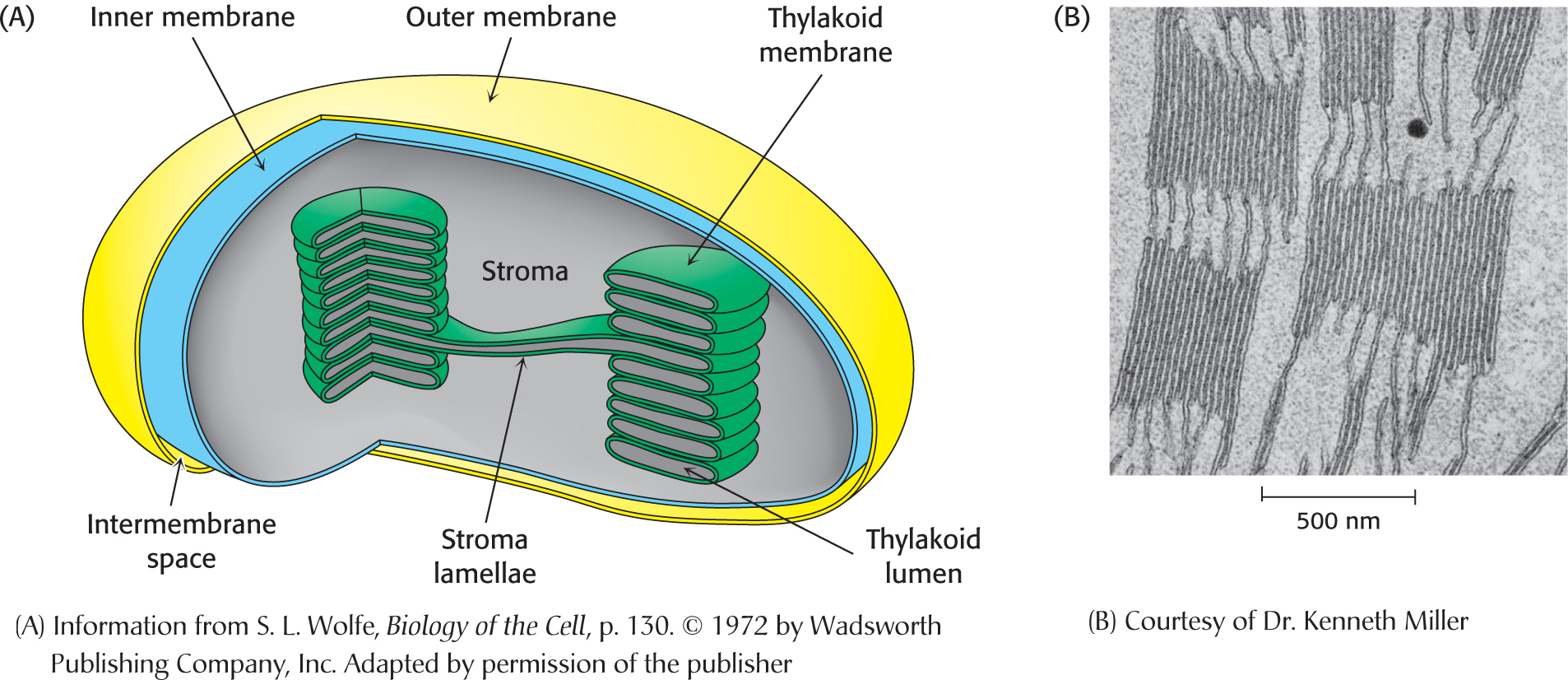
22.1 Photosynthesis Takes Place in Chloroplasts
In Section 9, we learned that oxidative phosphorylation is compartmentalized into mitochondria. Likewise, photosynthesis is sequestered into organelles called chloroplasts, typically 5 mm long. Like a mitochondrion, a chloroplast has an outer membrane and an inner membrane, with an intervening intermembrane space (Figure 22.2). The inner membrane surrounds a space called the stroma, which contains the enzymes that use reducing power and ATP to convert CO2 into sugar. The stroma is akin to the matrix of the mitochondrion, which is the location of carbon chemistry during respiration. In the stroma are membranous discs called thylakoids, which are stacked to form a granum. Grana are linked by regions of thylakoid membrane called stroma lamellae. The thylakoid membranes separate the thylakoid lumen from the stroma. Thus, chloroplasts have three different membranes (outer, inner, and thylakoid membranes) and three separate spaces (intermembrane, stroma, and thylakoid lumen). The thylakoid membrane and the inner membrane, like the inner mitochondrial membrane, are impermeable to most molecules and ions. The outer membrane of a chloroplast, like that of a mitochondrion, is highly permeable to small molecules and ions. Like the mitochondrial cristae, the thylakoid membranes are the sites of coupled oxidation–

 BIOLOGICAL INSIGHT
BIOLOGICAL INSIGHTChloroplasts, Like Mitochondria, Arose from an Endosymbiotic Event
Chloroplasts contain their own DNA and the machinery for replicating and expressing it. However, chloroplasts are not autonomous: nuclear DNA encodes many proteins contained in chloroplasts. How did the intriguing relation between the cell and its chloroplasts develop? We now know that, in a manner analogous to the evolution of mitochondria, chloroplasts are the result of endosymbiotic events in which a photosynthetic microorganism, most likely an ancestor of a cyanobacterium, was engulfed by a eukaryotic host.
The chloroplast genome is smaller than that of a cyanobacterium, but the two genomes have key features in common. Both are circular and have a single start site for DNA replication, and the genes of both are arranged in operons—